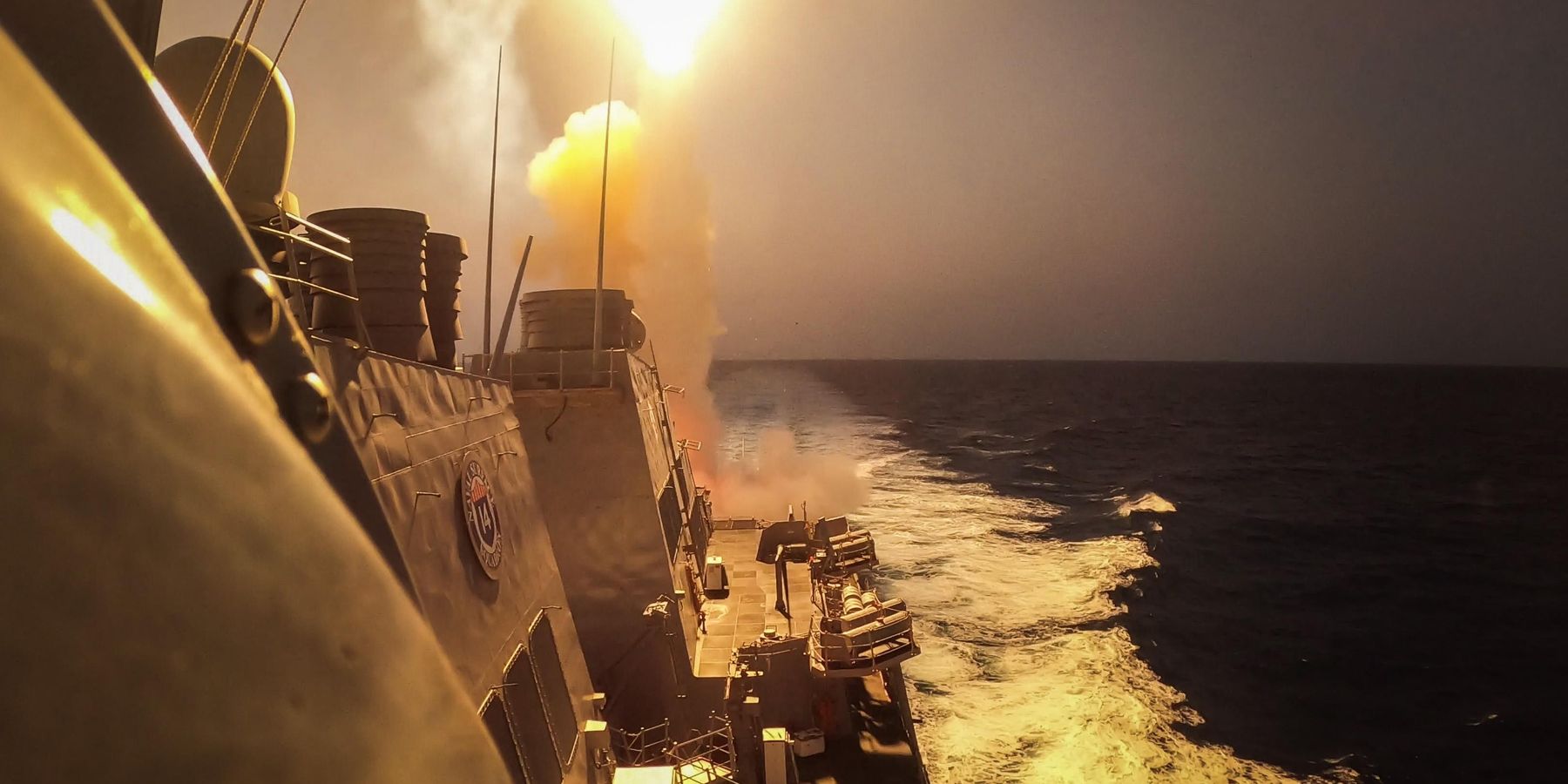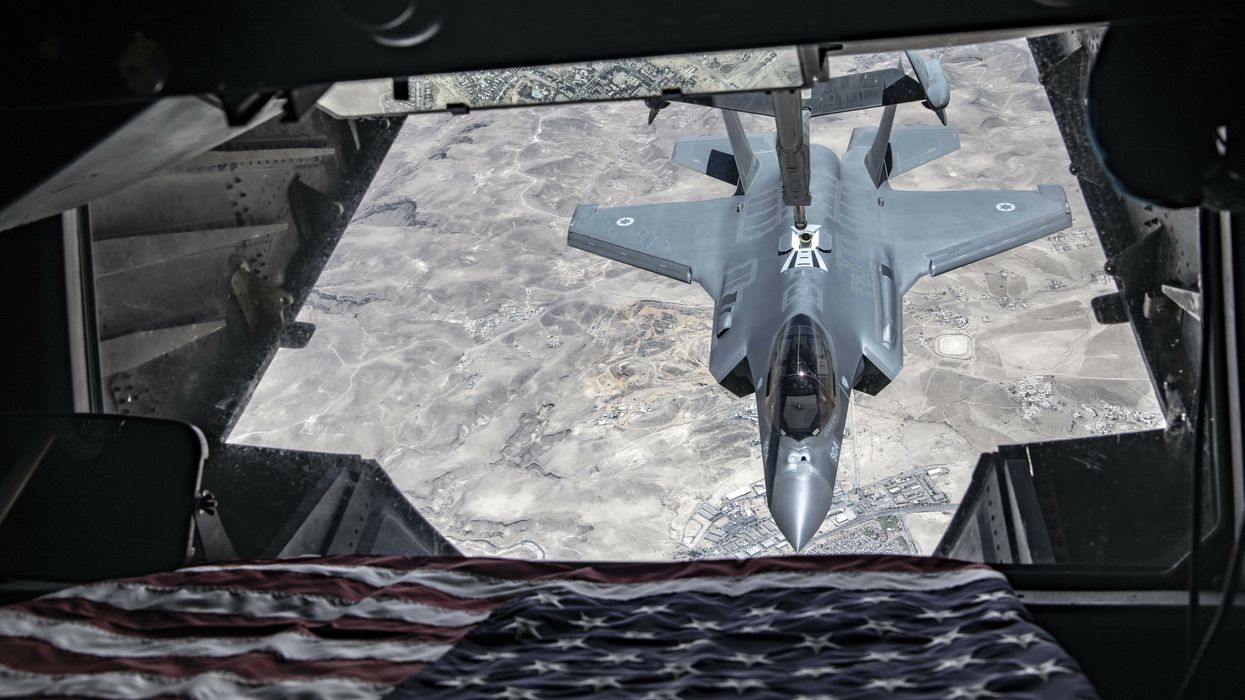Historic levels of air defense missiles were expended by U.S. Navy ships in the Middle East in defense of Israel and in protection of Red Sea shipping since October of 2023. This led Admiral James Kilby, Naval Operations acting chief, to testify in June that their ship-launched air defense interceptors — SM-3s — are being expended at an “alarming rate” in defense of Israel.
But just how alarmed should we really be?
To determine this we need to know how many missiles the U.S. had in its inventory prior to October of 2023, how many missiles were expended since then, and how many new missiles have been produced since the beginning of 2024 up through June of 2025.
First, the Navy released a report on how many standard missiles were expended from October 2023 to December 31, 2024 that allows us to make a reasonable guesstimate of how many standard missiles were used to defend Red Sea shipping against the Houthis in first six months of 2025 for a total from October 2023 of 168 SM-2s, 17 SM-3s and 112 SM-6s.
Meanwhile in 2024, Israel suffered two major attacks from Iran: 120 ballistic missiles in April and 180 ballistic missiles on Oct 1. Additional details revealed in this April USNI article, combined with the minimum number of interceptors launched per U.S. Navy interception, allows us to estimate that a total of 24 missiles were expended by a total of four different Arleigh Burke destroyers in 2024 to supplement Israel’s ballistic missile defense: let's say 12 SM-3s and 12 SM-6s.
To come up with an educated guesstimate of how many standard missiles were used to defend Israel during the 2025 12-day war, we will rely on a few plausible assumptions, with the overarching one being that Israel burned through many of its own interceptors in 2024.
This is what presumably led the U.S. Navy to increase the number of Arleigh Burke Destroyers protecting Israel from two in 2024, to five in 2025. We will also assume the destroyers tasked with protecting cities and military facilities many miles inland, were stocked with more than the normal loadout of missiles capable of intercepting ballistic missiles at long range, i.e. SM-3s and SM-6s.
Hence, for the purpose of this analysis, each the of the five destroyers would be loaded out with 30 SM-3s, 40 SM-6s, with the balance of their 96 vertical launch tubes filled with a mix of quad packs of ESSMs, Tomahawk land attack missiles (TLAMs), ASROCs, and of course SM-2s. This is far more SM-3s than the 4 -8 SM-3s these destroyers would normally carry, but given their tasking, it seems reasonable.
Using the above assumptions, and while reserving some for ship defense, the Navy would have collectively launched an estimated 130 SM-3s (though at least one report based on a U.S. official has that number at 80) and 150 SM-6s in defense of Israel in June. We will further guesstimate that the five ships launched at least 100 SM-2 in total to defend against Iranian drones and missile targeting Israeli facilities very near the coast.
Adding in the missiles we know were used to defend Israel in 2024 gives us an estimate of 100 SM-2s, 142 SM-3s and 168 SM-6s used to defend Israel since October 7, 2023.
Combining the numbers with the above estimates for the Red Sea conflict through June 2025, we can estimate a grand total of 268 SM-2s, 159 SM-3s, and 280 SM-6s used in the Middle East from October of 2023 through the end of June 2025.
These estimated numbers may or may not represent “alarming rates” of use depending on how many we started with and how many were produced during the same period. Fortunately, a Heritage Foundation report gives us a base number of missiles in the inventory as of October 2023: 9,100 SM-2s, 400 SM-3s and 1500 SM-6s. It should be noted that the SM-2 estimate could be optimistic due to some of the missiles in the inventory being too old to be cost-effectively upgraded.
To estimate the number of SM-2s, SM-3s and SM-6s produced from October of 2023 through June 30, 2025 we will use publicly available data plus a bit of estimating.
Regarding SM-2 production, it looks like the Pentagon is focusing on upgrading existing SM-2s while continuing to produce new SM-2s for foreign customers. Regarding SM-3 production, the CSIS put together a summary of when SM-3s will be delivered, with 51 SM-3s being delivered in 2024, 71 to be delivered in 2025 (36 by June 30) and 66 in 2026.
For the SM-6s, yearly production has been averaging 125, with plans to increase yearly production to 300 per year by 2028.
This works out to zero new SM-2s, 87 SM-3s and about 187 SM-6s produced for use by the Navy from Jan 1, 2024 through the end of June 2025. For the sake of simplifying, we are not estimating production for the last three months of 2023.
All told with the expenditures in the Red Sea and Israel, we could be looking at a 3% decrease in SM2s, 33% decrease in SM3s, and 17% decrease in SM6s in the U.S. stockpiles since 2023.
These are alarming numbers that become even more alarming if it turns out we expended even more missiles in the June defense of Israel than what we guesstimated above.
Then we have the issue of cost. An October 2024 Wall Street Journal article reported that the number of inceptors deployed since October 2023 cost the U.S. $1.8 billion. Given the level of activity in 2025, this could easily have been doubled by the end of June 2025.
But just looking at the costs in aggregate does not reveal a key problem that the Navy is facing — its per missile cost is too much! SM-3s, depending on the variant, cost between $12.5 million and $28.7 million each, SM-2s cost over $2.5 million, and SM-6s cost $4.3 million.
While we might be able to sustain this kind of exorbitant cost in a fight against a rebel force like the Houthis and a second-tier military like Iran, a fight with a power like China would see standard missile usage skyrocket by more than an order of magnitude.
And with each interception attempt requiring at least two missiles, and often more than that, thwarting a few missiles can easily end up costing more than it does to buy an F-35, making missile defense against a peer adversary seem unaffordable. Now that is truly alarming.
- Reports: Despite limited stockpile, US gives Israel another THAAD ›
- By the numbers: US missile capacity depleting fast ›
- Why Israel won't beat the Houthis | Responsible Statecraft ›
- US depleted its missiles in Ukraine, Israel. Now it wants more fast. | Responsible Statecraft ›
- On Ukraine and Venezuela, Trump needs to dump the sycophants | Responsible Statecraft ›
- Inflating Russian missile costs hides US weapons crisis | Responsible Statecraft ›
















